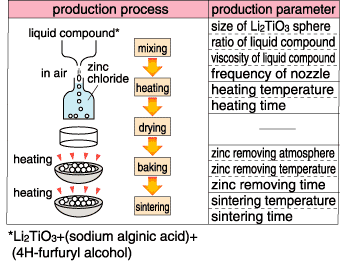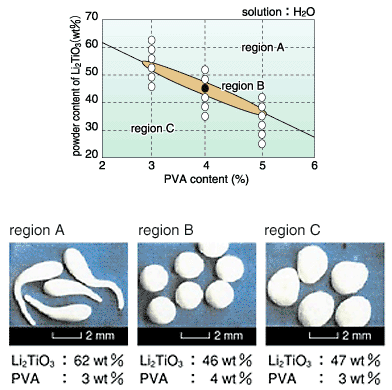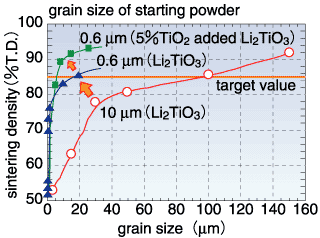Tritium, which is a fusion reactor fuel, is produced by a reaction of lithium with neutrons that are generated by deuterium-tritium nuclear fusion reactions. Lithium is to be used in the shape of a ceramic microsphere which contains lithium like Li2TiO3. Ceramic microspheres of total weight one hundred tons are loaded in a blanket. In the case of ITER ceramic microspheres of one ton are needed as a test of a breeding blanket. The production of the ceramic microspheres that are the tritium breeding blanket materials has been conducted only on a laboratory scale, in the world. At that time there was no prospect of mass production. We have devised a "wet type grain production method" (Fig. 2-23) in cooperation with a company that has production experience of micro-coated fuel particles for high temperature gas-cooled reactors (patent taken). A study of using
an automatic dropping device has been performed to produce gel spheres that lead to a nucleus of microspheres. A method for getting an adequate particle size has been found (Fig. 2-24). The production technique had a better yield rate as compared to the usual production method. By this technique the production of microspheres that have the desirable small particle size was not only probable but also presented the possibility of easily making a large scale production facility.
The ability to supply one ton of ceramic microspheres for breeding tritium has been acquired. The ceramic microspheres are needed for "an irradiation test of a test breeding module," that is one of the purposes of the construction of ITER. Furthermore, the recycling of lithium that is a rare resource is probable by dissolving the microspheres used in fusion reactors with acid to produce the starting material for microsphere production. |


